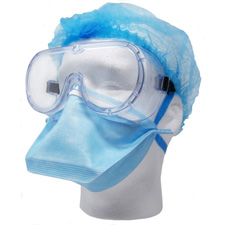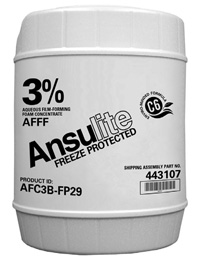| The Home page of ILPI's Safety Data Sheet (SDS) Resource, the leader in SDS information since 1995! | |
| The history and philosophy behind this resource. | |
| A curated collection of books and reference materials concerning Safety Data Sheets and closely related topics. | |
| Paste your plain text SDS into the SDS-Demystifier, and it will be converted into a hypertext-enriched document with links to detailed explanations of each key term. | |
| An extensive list of frequently asked questions about Safety Data Sheets including regulations, content, compliance, and more. | |
| A humorous take on Safety Data Sheet jargon. Fill in the blanks on our entry form to generate a personalized Unsafety Data Sheet to share with your coworkers. | |
| Since 1995, we've maintained this massive curated list of the best places to find Safety Data Sheets on the Internet. | |
| You are here! Way more than a glossary, this hypertext-enhanced resource covers hundreds of SDS-related terms and expert knowledge. Each entry includes both the SDS relevance and links to additional authoritative resources. | |
| Archived results of Safety Data Sheet related polls taken by some of our millions of site visitors | |
| The OSHA regulations behind SDS regulations, including the inspection guidelines and over 400 official interpretations letters under the Hazard Communication Standard | |
| Commercial suppliers of SDS authoring and management software as well as cloud compliance services. | |
| Commercial companies that will create SDS's for your specific needs as well as SDS translation companies. |

Safety signs, banners, and scoreboards? Get yours at Safety Emporium!
Definition

Get your US-manufactured NIOSH-approved N95 surgical respirators and more from Safety Emporium.
A mist or fog is a microscopic suspension of liquid droplets in a gas such as the Earth's atmosphere. The term is most often used with respect to water vapor. The size of the liquid particles is usually in the range of 1 to 1,000 nanometers.
Do not confuse a fog with a vapor. Vapors are composed of single, gas-phase molecules whereas mist droplets are liquid-phase and contain thousands or millions of molecules. Many, but not all, vapors are colorless and therefore invisible, whereas fogs can generally be seen and reduce visibility. Vapors do not wet objects that they contact (although they may condense on or react with a surface) whereas mists generally do. See the vapor entry for more information about solids, liquids and gases.
Do not confuse mists with fumes which are solid airborne particles.
Additional Info
The term "fog" is usually applied to a suspension that has condensed from the vapor phase to the liquid phase. "Mist" is usually applied to a liquid material that becomes airborne using mechanical force or action such as a spray nozzle, splashing or agitation. In general, the terms are used interchangeably.
Fogs or mists are examples of aerosols or colloids. Further information about flammable aerosols is available.
Mists of hazardous chemicals are common in some workplaces. Examples include paint sprays, oil mists from cutting or grinding operations, and acid mists.
Meteorologists (weather forecasters) tend to use the term "mist" when visibility drops below 5 km and "fog" when it drops below 1 km. This distinction is based in part on the diameter of the water droplets and how the scattering of light changes with particle size. See the links under Further Reading below for more on light diffraction and fog/mist.
SDS Relevance
This term usually appears on a Safety Data Sheet in one of two ways:
- It may describe the chemical behavior of a volatile material.
- Section 5 (fire-fighting measures) may recommend a mist or fog of water vapor or other material as a fire-fighting measure.
If the mist is a hazardous material, eye and skin contact as well as inhalation is a danger. You can change your workplace practices to reduce or eliminate the formation of mists in the first place, use engineering controls such as local exhaust ventilation, and wear appropriate personal protective equipment to reduce these risks.
Also recognize that when a mist droplet hits a solid surface it will usually wet the material, compounding your problems.
Further Reading

Safety Emporium sells MIL-SPEC fire fighting foam concentrates and other extinguishing agents.
- The NIOSH Pocket Guide to Chemical Hazards entry on Oil mist (mineral).
- An archived OSHA page devoted to Occupational Safety And Health Guidelines For Vegetable Oil Mist.
- Metalworking Fluids: Safety and Health Best Practices Manual at US OSHA.
- Occupational Exposure to Metalworking Fluid Mist and Sump Fluid Contaminants from The Annals of Occup Hygiene 2003, 47(1), pp 17-30.
- The Occupational Exposure Limit for Fluid Aerosol Generated in Metalworking Operations: Limitations and Recommendations from Saf Health Work 2012, 3(1), pp 110.
- Maternal Occupational Oil Mist Exposure and Birth Defects, National Birth Defects Prevention Study, 1997-2011 from Int J Environ Res Public Health 2019, 16(9), 1560.
- Fog forecasting and more at the US National Weather Service.
- Droplets and Light - Diffraction of mists and fogs at Atmospheric Optics.
- Haze, at the American Meteorological Society's Glossary of Meteorology includes links to mist, fog, clouds, and more.
- The Phases of Matter at Chemistry LibreTexts.
See also: boiling point, dust, engineering controls, fume, vapor, ventilation.